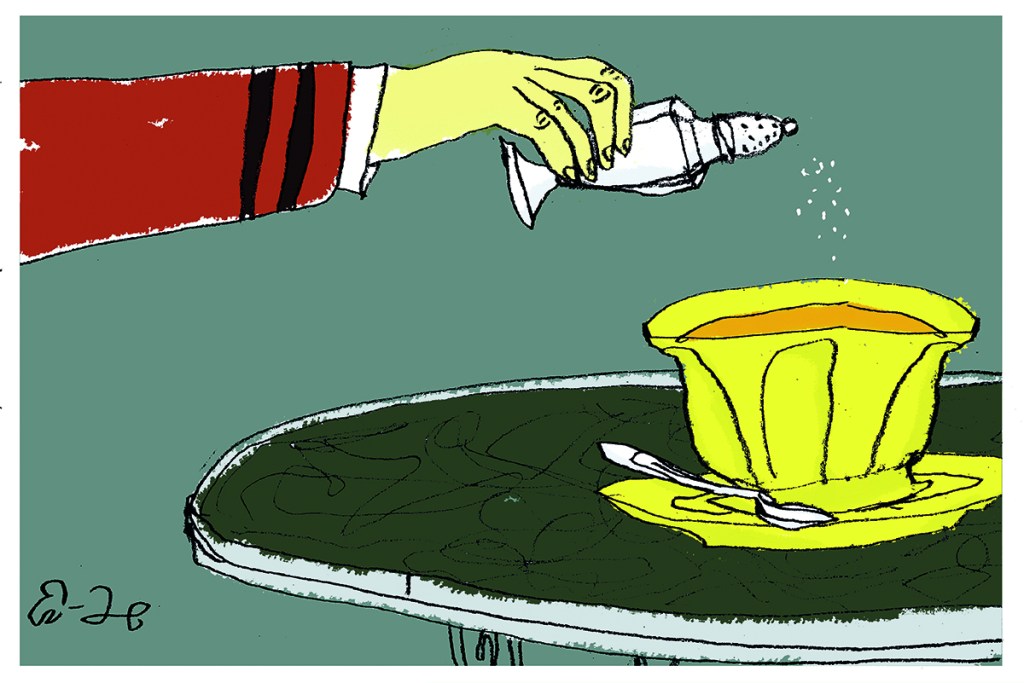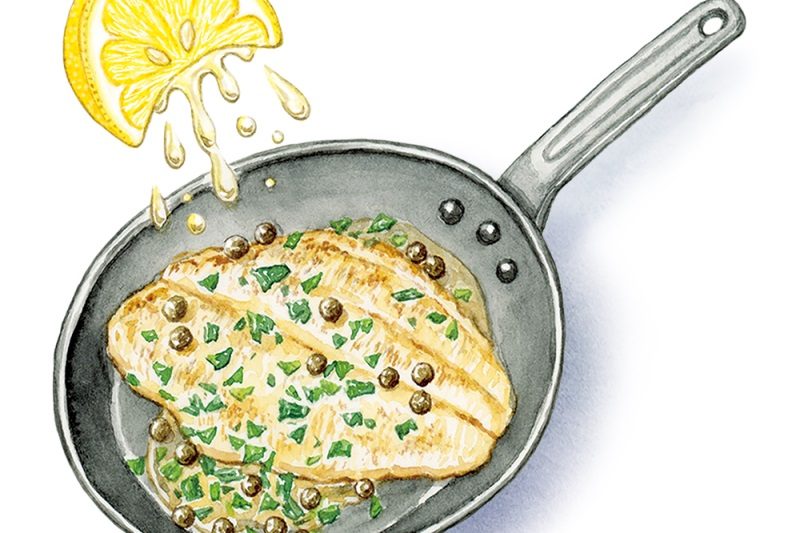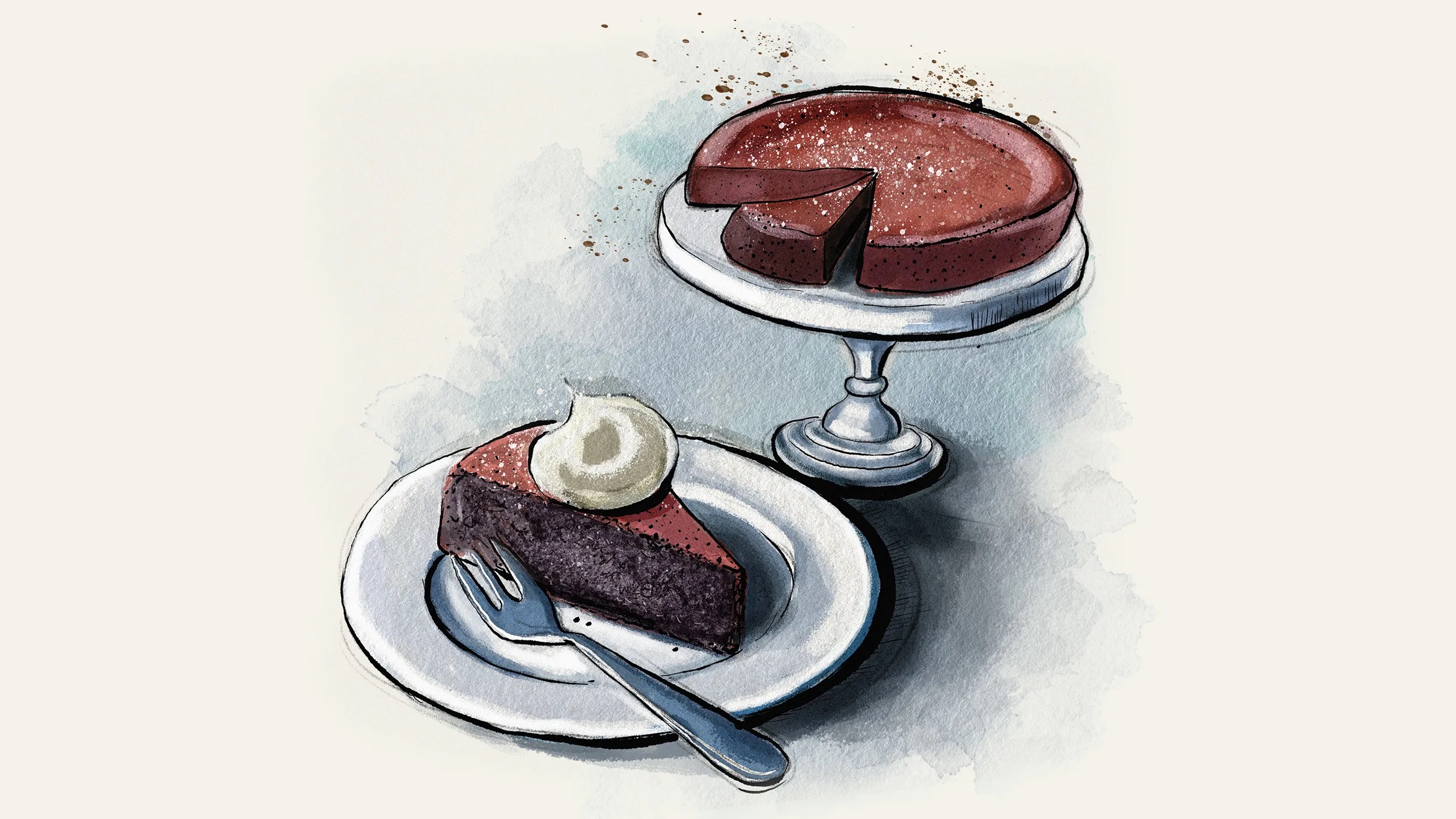It takes four people, according to the French, to get a salad dressing right: a spendthrift for the oil, a miser for the vinegar, a wise man for the salt and a lunatic for the pepper. A tough cast to assemble, you might think, but the freehanded, the tightfisted and the insane aren’t such rare birds. The true needle in the haystack is the wise man who would have anything to do with a recipe involving four chefs. Cooks, broth, too many — enough said. Most wise men would be out of town before you could say “smoked oak salt flakes” ten times fast.
But the point stands: getting the salt right isn’t a walkover. The rookie has to steer a tight course between undersalted Scylla and oversalted Charybdis. The most common mistake in home cooking, according to various chefs, is insufficient salting. But it’s also important to add the right kind of salt at the right time. And though oversalting may seem like conclusive disaster, there are — sometimes — ways to recover, such as diluting the recipe with more liquid. Adding fat, such as cream or butter, can also temper saltiness.
We need salt to live; the human body is approximately 0.4 percent table salt (sodium chloride by another name). Salt is also a natural food preservative. It absorbs water, creating a drier environment in which bacteria have a hard time surviving. Should a foolhardy little bacterium get into the food anyway, salt will kill it by sucking the moisture out of its innards. Rather gory, on the microscopic level.
Most obviously, salt affects taste, and not just by adding saltiness. Because of its tendency to pull water out of the cells in the food, it concentrates all flavors, heightening savory tastes in particular (which is why salted steak is so much more delicious than unsalted). In smaller quantities, it intensifies sweetness; most recipes for sweet food call for a pinch of salt, if not more. It also masks bitter tastes, such as those in green vegetables.
If you taste what you’re cooking, and the flavor is good on the tip of your tongue but fades toward the middle, possibly leaving faintly bitter tones at the back before you swallow, that’s a sign of undersalting. The middle of the tongue, or mid-palate, has fewer taste buds than the rest and thus is more sensitive to the concentration and balance of flavors. Chefs advise to add a bit of salt, then taste again to see if the flavors are moving farther back on the tongue. A properly salted dish won’t necessarily taste salty — in fact it probably shouldn’t — but it will leave consistent flavor across the whole tongue and finish smoothly, without bitterness. Cold dishes need more salt than those served hot, since heat makes the flavors in the food more accessible to the taste buds.
As for fancy finishing salts, chefs reserve those to season food right before serving. Since at this stage most of the salt will remain undissolved, its color and its texture — flaky, coarse or crystallized — will enhance the final dish (flaked sea salt can add a delightful crunch to salad, for instance), and the subtle flavor profile of finishing salts, which usually retain mineral content removed in ordinary table salt, can shine. Pink Himalayan salt, or chunks of black lava salt collected in Hawaii and prepared in a process involving charcoal, can be particularly dramatic on fish or steak. Fleur de sel is the most delicate kind of salt, obtained by skimming the tops of pans of evaporating seawater. This is the kind chefs sprinkle on desserts such as crème brûlée.
One way to avoid errors in salting meat is to let the animal eat the salt, then eat the animal. This stroke of genius was developed in the eleventh century at Mont-Saint-Michel in France, when it was noted that meat from lambs pastured in the saltmarshes was uniquely delicious. To this day, charming black-faced sheep wander the vivid green meadows along the shore by the Mount, munching on sea-soaked grasses. They are agneaux de prés salés, among the most prized lambs in French cuisine, and they must spend seventy-two days feeding in salt meadows to qualify for this title. Rich in sodium and iodine, their diet imparts a much sought-after flavor to the meat.
In North America, a few producers are raising saltmarsh lamb, but it’s more costly than traditional sheep farming. A shepherd family in Newfoundland loads their sheep each year, a few at a time, into a small flat-bottomed boat and ferries them out to an island to eat briny vegetation for the summer. Another farmer in Québec trucks in seaweed from Nova Scotia for feed. Island View Farm in Cape Charles, Virginia, is rebuilding a herd of Hog Island sheep, a saltmarsh variety bred from eighteenth-century British imports to the Virginia barrier islands. For such efforts to reach the wider market, people who eat lamb need to learn what’s special about this meat and why it’s worth a premium price. It’s all about building a reputation, in short, and there we can learn something from Mont-Saint-Michel.
In the eleventh century, the Benedictines of the abbey were entitled annually to the best lamb from each local flock. At the time, this would have been deemed a perfectly fair arrangement by all concerned, a suitable contribution toward the important charitable work done by monasteries (work that government programs in the modern era struggle, with billions in tax money, to accomplish as effectively). The monks’ chief task was, of course, to offer prayer and worship to God on behalf of their fellow men. But monasteries were also — to use modern terms — hospitals, schools, libraries, hotels, soup kitchens and homeless shelters. At the same time, they were centers for the arts, for scientific research, for the chronicling of history, and for scholarship. While black-socked medieval lambs gamboled about the green marshes, Benedictines on the Mount above translated Aristotle from the original Greek into Latin, a project historians say had an enormous impact on European intellectual development.
Pilgrims from all over France flocked to St. Michael’s Mount to beg the golden archangel’s help against the powers of hell. At the abbey, they would be served the local lamb, and recognizing it as a delicacy, would bring back stories of it to their home regions. Over time l’agneau de prés salés became celebrated and earned a gastronomical prestige that has only grown with the centuries.
The solution for those who want North America to learn to love l’agneau de prés salés? A new monastic age, of course. Medieval monasteries were like salt, rocky places of strength and wisdom sprinkled across the land, drawing out the best flavors in the society where they were embedded and harmonizing them with the highest good. In the grand scheme of things, a well-seasoned leg of lamb is nothing to a well-harmonized society. But all other things being equal, why not have both?
This article was originally published in The Spectator’s February 2023 World edition.

























